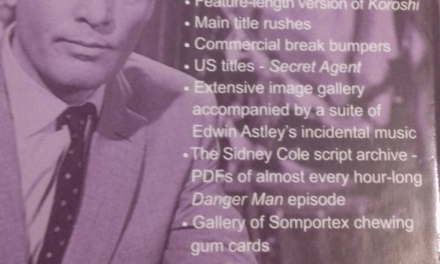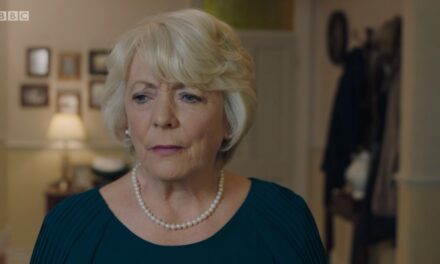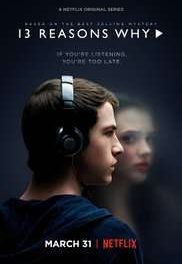It all started with a big bang. So, there I was, sitting on the couch after a long day, remote in hand, ready to surf a few hundred channels on my television and make the most of a quiet hour at home. And yet, for all of the choices at my disposal—movies, sports, news, talk shows, even a few first-run episodes of some broadcast dramas–when I landed upon a rerun of The Big Bang Theory (“The Maternal Capacitance”—the one where Leonard’s mother comes to visit), the remote went heavy in my hand. I had to watch. I just had to. And I wasn’t sure exactly why.
I don’t mean that as a knock on the series. (After being resistant to it for so long, I, too, have signed the Roommate Agreement.) For all of the choices that I had, though, I wasn’t sure why I went with that one. I couldn’t say that it was because that particular episode happened to be new for me. (In that case, as Jonathan Gray points out in Television Entertainment, the rerun would have been “no more repetitive than […] a book in its second printing, or a film playing on its second day” (40).) In fact, given that the show has been in syndication for some time now here in the States and seems to run for several hours a night on one channel or another, I had probably seen it at least three or four times already.
In their 1992 study on “The Uses and Gratifications of Rerun Viewing,” Diane Furno-Lamude and James Anderson suggest that there a number of reasons why viewers would opt for a rerun over newer alternatives. They might be motivated by a need for “ascertainment,” to “[pick] up on parts [of a show that they might have] missed” (369). From my previous viewings, I definitely couldn’t make that claim. I knew the episode well enough, in fact, to anticipate Leonard’s mother’s cutting comments in the lunchroom or how Sheldon would wind up singing with her at the end of the episode.
According to Furno-Lamude and Anderson, viewers might also re-watch a program because it made them feel nostalgic and “wistful for things past” (371). The experience of watching a television show, in this regard, becomes both a cultural and psychological reference point for us, something akin, perhaps, to what Wordsworth profoundly calls “spots of time” in The Prelude; by recreating that moment of first viewing, we take ourselves back to who and what we were when it happened. As John Weispfenning puts it, “Reruns allow viewers to recapture youth, not just through hazy memories, but with actuality—presented exactly as it was originally” (173). (Consider Richard Hewett’s recent trip back to 1986 here, when “Even The Repeats Were Good.”)
That probably didn’t have much to do with my choice either. The episode that I saw first ran in 2009, and I’m not even sure if I watched it then or at some later point in time, when it aired as a rerun. (That fact alone wouldn’t bode well for any bets on nostalgia.) If I was in the mood to fire up the DeLorean and step on the gas, psychologically or otherwise, I would probably be going back farther than that.
As I started to discard some of these more rational justifications for my behavior, I kept coming back to the disturbing thought that I might have knowingly burned a half hour of my life on a show that I had already seen for no good reason and that this was not the first time that I had done it. Maybe television was just my drug of choice, and I was, yet again, in the mood for some mindless, brain-rotting activity.
That might not be far from the truth. Furno-Lamude and Anderson refer to the “time-serving” function of reruns, “as a way to fill a void of having nothing else to do” (368). They also note that, “[i]n the case of watching a favorite rerun, redundancy could reduce the level of mental effort because the rerun is predictable” (371). On a night full of possibility and promise, when I could have walked my dogs or fixed a light switch or read a book or done something else, anything else more productive, I instead threw myself head first into the “void of having nothing else to do” and deliberately lingered there until a “reduced level of mental effort” gave way to an early bedtime. Ironically, a comedy about scientific geniuses was helping me to de-evolve.
But even then—and I sit up and wipe away my drool as I write this—in those moments when television reruns appear to serve as little more than a glass of warm milk or, worse, a mental laxative, they may have a more beneficial function and provide us with something deeper, some kind of psychological comfort that necessitates their existence even when DVDs, DVRs, and YouTube should eliminate that need. (Why do we still bother re-watching entire episodes on multiple occasions when we can just skip the commercials and jump to the best parts or find them posted online?) If the world offers us nothing but chaos, flux, and unpredictability—and what an intriguing cocktail that is—television can counter that, to a certain degree, through the possibility of control and the security of repetition. When we actively choose to watch something that we have already seen, we locate (or relocate) ourselves in an overly familiar place, one that provides us with the safety and reassurance of knowing what is going to happen. We may not know what the winning lottery numbers will be, when the car will break down, when the milk will run out, or what the cat will drag in, but, for that half hour, we can know exactly how a visit from a scientist’s mother will disrupt his life and drive him into the arms of the woman across the hall. And in that predictability, on some level, we find comfort.
In analyzing the benefits of repeated film watching—an analysis that Gray refers to in his book—Barbara Klinger explains that “[f]amiliar material […] brings enjoyment via a combination of both mastery and solace: mastery of the narrative of one’s own world; solace in the sense of control that predictability brings and in the way the screening of the same narratives can transform a space into a secure environment” (155). There is both a pleasure and a purpose, then, to knowing and re-knowing, things that we find on and through television even when the medium appears nearly useless or when we do when we use it that way.
No one, of course, wants to be permanently stuck in their own version of Groundhog Day, and Klinger is quick to add that this repetition is satisfying as part of that “inevitable daily dance […] between the known and the new. Too much of either would be unsettling or displeasing” (155), hence Bill Murray’s great anxiety about having to repeat the same day over and over again in Punxsutawney, PA.
So, regardless of how little sense we may find in these acts of repetition on the surface, there may well be something mindful beneath the mindlessness. We may be satisfying the need for some interlude in the daily dance, some small respite that enables us to deal with the new that follows. Looking back on it, I do think that that’s what happened in my case, that I was looking for a little predictability and wanted to enjoy the satisfaction of knowing with complete certainty, something to be found in a television repeat or even at the end of a blog post.
It all started with a big bang. So, there I was…
Douglas L. Howard is Chair of the English Department on the Ammerman Campus at Suffolk County Community College, editor of Dexter: Investigating Cutting Edge Television (2010), and co-editor of The Essential Sopranos Reader (2011) and The Gothic Other (2004).







